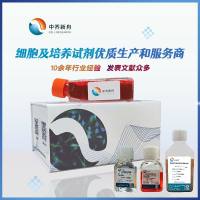Optimization of Lipid-Mediated Ribozyme Delivery to Cells in Culture
互联网
425
Ribozymes have considerable potential as agents to modify gene expression. Strategies have recently been reported for modifying synthetic hammerhead ribozymes to render them nuclease-resistant while retaining catalytic activity (1 ). Modified ribozymes therefore offer promise as therapeutics. An important component in obtaining efficacy of a ribozyme on its intracellular target is the ability to introduce the ribozyme into the cell efficiently and reproducibly. Although cells in culture will take up free oligonucleotide via endocytosis (2 ), the process is inefficient and usually does not result in an efficacious dose being delivered. Thus, many methods have been described for enhancing this process. Cationic lipid-mediated delivery of plasmid DNA into a cell was first described by Feigner et al. (3 ). In the last several years, cationic lipids have been used extensively to enhance cellular uptake of DNA and RNA. Cationic lipids can interact with the negatively charged phosphate groups on DNA or RNA to form a lipid-DNA (RNA) complex. When incubated with cells, these complexes are believed to fuse with the cell membrane (4 ) or more likely undergo endocytosis (5 ).









